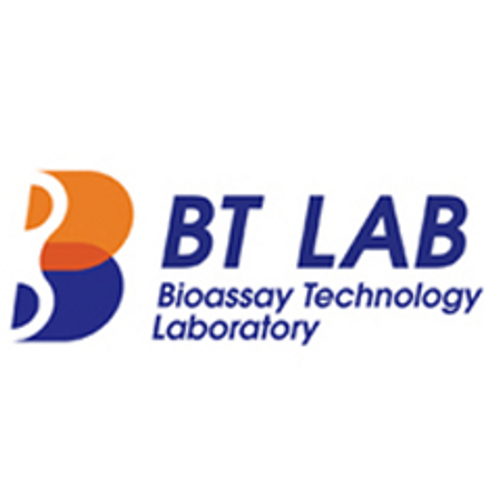Product Description
Human Elafin (PI3) ELISA Kit | AE27557HU | Abebio
Species Reactivity: Human (Homo sapiens)
Abbreviation: PI3
Alternative Name: ESI; MGC13613; SKALP; WAP3; WFDC14; cementoin; WAP four-disulfide core domain 14|elafin|elastase-specific inhibitor|pre-elafin|protease inhibitor 3; skin-derived (SKALP) |skin-derived antileukoprotei
Application: ELISA
Range: 0.312-20 ng/mL
Sensitivity: 0.124 ng/mL
Intra-Assay: ≤5.2%
Inter-Assay: ≤9.6%
Recovery: 0, 92
Sample Type: Serum, Plasma, Other biological fluids
Detection Method: Sandwich
Analysis Method : Quantitive
Test Principale: This assay employs a two-site sandwich ELISA to quantitate PI3 in samples. An antibody specific for PI3 has been pre-coated onto a microplate. Standards and samples are pipetted into the wells and anyPI3 present is bound by the immobilized antibody. After removing any unbound substances, a biotin-conjugated antibody specific for PI3 is added to the wells. After washing, Streptavidin conjugated Horseradish Peroxidase (HRP) is added to the wells. Following a wash to remove any unbound avidin-enzyme reagent, a substrate solution is added to the wells and color develops in proportion to the amount of PI3 bound in the initial step. The color development is stopped and the intensity of the color is measured.
Product Overview: Elafin is an elastase-specific inhibitor, which contains a WAP-type four-disulfide core (WFDC) domain, and is thus a member of the WFDC domain family. Chang et al. and Schalkwijk et al. described a low molecular weight elastase inhibitor derived from psoriatic skin and termed SKALP for 'skin-derived antileukoproteinase.' They demonstrated that this inhibitor can be found in the epidermis of several inflammatory skin diseases, but not in normal human epidermis. Wiedow et al. referred to this molecule as elafin, and Sallenave and Ryle referred to it as elastase-specific inhibitor. It is found in the urine of psoriatic patients, and immunohistochemical studies showed that SKALP/elafin is found in the suprabasal differentiated keratinocytes of psoriatic epidermis. Molhuizen et al. isolated a precursor of SKALP/elafin from cultured keratinocytes and cloned its cDNA.
Stability: The stability of ELISA kit is determined by the loss rate of activity. The loss rate of this kit is less than 5% within the expiration date under appropriate storage condition. The loss rate was determined by accelerated thermal degradation test. Keep the kit at 37°C for 4 and 7 days, and compare O.D.values of the kit kept at 37°C with that of at recommended temperature. (referring from China Biological Products Standard, which was calculated by the Arrhenius equation. For ELISA kit, 4 days storage at 37°C can be considered as 6 months at 2 - 8°C, which means 7 days at 37°C equaling 12 months at 2 - 8°C) .
 Euro
Euro
 USD
USD
 British Pound
British Pound
 NULL
NULL








